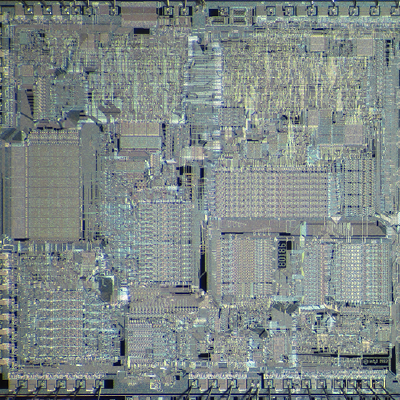You accidentally added a dot at the end of the link. Here’s the fixed one https://google.github.io/styleguide/cppguide.html
Moved here from lemmy.world. Long live piracy!
- 1 Post
- 48 Comments

 7·3 months ago
7·3 months agoDNS over HTTPS and use a DNS located in another country - problem solved
Almost correct - that would be acceleration. Jerk is the third derivative of position with regard to time, so if the number is speed, the jerk is the rate of the rate of the number go up go up go up
The main verb is most often in the second position, the second verb you are referring to is a placeholder for an auxiliary verb that usually is a different form of a previously main verb
Remember kids, piracy is not only moral, but a moral obligation in this capitalist hellscape! (and not theft by definition, and should not be illegal) Torrents are one of the few effective weapons against corporations
I think if it was democratic, I would trust it even less. Relying on democracy in a community when specialist knowledge is required to understand a topic is a major factor that contributed to the creation of such abominations as anti-vaxxers, flat-earthers etc.
https://www.ncbi.nlm.nih.gov/pmc/articles/PMC8901252/
It is difficult to provide a valid estimation of real frequency. There are only a few own observations in the literature and a lot of citations.
We performed a search in our radiologic database, looking for situs inversus as key words in the results. Between 2006 and 2020, 217,646 imaging examinations (ultrasound, CT and plain radiography) were performed at the Department of Transplantation and Surgery, Semmelweis University. Out of them, 21 cases were found, which represents a 1:10,000 frequency. This hospital-based prevalence rate best reflects Adams et al in 1937 (23:232,113), and Lin et al in 2000 (20:201,084) from Massachusetts, as data from own observations.26 This rate is similar as well to the population-based Baltimore-Washington Infant Study.12 SIT is slightly more frequent in males: 1.5:1.27
https://www.healthline.com/health/situs-inversus#symptoms
Because the condition seldom causes symptoms and is so rare, a person may not know they have it. And it may not be discovered until visiting a doctor for a different reason.
https://my.clevelandclinic.org/health/diseases/23486-situs-inversus
You may not develop any symptoms with situs inversus. Although your organs are reversed, they’re often still functional. So you wouldn’t notice any signs or complications.
Of course, trying to estimate how many people don’t know about a disease is a difficult task, but the general consensus is the condition is rare and often doesn’t produce any symptoms, as such there are definitely many people with the condition that haven’t even ever heard of it.
In fact many of them don’t, since the body is mostly symmetrical and apart from cutting them open or doing an MRI, you can’t really tell (which isn’t a big deal in most cases, because most medical procedures work regardless of this condition). Also, the heart is located almost in the middle, so there is not much difference.

 2·5 months ago
2·5 months agoWell, sets of measure 0 are one of the fundamentals of the whole integration theory, so it is always wise to pay particular attention to their behaviour under certain transformations. The whole 1 + int + int^2 + … series intuitively really seems to work as an inverse of 1 - int over a special subspace of R^R functions, I think a good choice would be a space of polynomials over e^x and X (to leave no ambiguity: R[X, e^X]). It is all we need to prove this theorem, and these operators behave much more predictably in it. It would be nice to find a formal definition for the convergence of the series, but I can’t think of any metric that would scratch that itch.

 3·5 months ago
3·5 months agoInt is definitely not injective when you consider noncontinuous functions (such as f(X)={1 iff X=0, else 0}). If you consider only continuous functions, then unfortunately 1-Int is also not injective. Consider for example e^x and 2e^x. Unfortunately your idea with equivalence classes also fails, as for L = 1 - Int, L(f) = L(g) implies only that L(f-g) = 0, so for f(X)=X and g(X)=X + e^x L(f) = L(g)

 3·5 months ago
3·5 months agoAfter careful consideration I have come to the conclusion that the inverse of the operator L is obviously not 1/L and you are absolutely right. This derivation is complete nonsense, my apologies. In fact no such inverse can even exist for the operator 1 - integral, as this function is not an injection.

 18·5 months ago
18·5 months agoExcept the first assumption that e^x = its own integral, everything else actually makes sense (except the DX are in the wrong powers). You simply treat the “1” and “integral dx” as operators, formally functions from R^R into R^R and “(0)” as calculating the value of the operator on a constant-valued function 0. EDIT: the step 1/(1-integral) = the limit of a certain series is slightly dubious, but I believe it can be formally proven as well. EDIT 2: I was proven wrong, read the comments
As if Chinese phones didn’t have backdoors already

 26·7 months ago
26·7 months agoIt might be illegal in your country, but you can consider generating a person’s face (and details) and creating a fake ID photo using it to protect your identity.

 2·7 months ago
2·7 months agoIt would appear this is the simplest solution: https://www.microsoft.com/en-us/download/details.aspx?id=102134

 9·9 months ago
9·9 months agoIf you take a closer look, they are actually quite spacious

 3·9 months ago
3·9 months agoBecause it pumps heat from inside to the back, so if the back is blocked it will struggle to pump heat into that tiny overheated space

 1·9 months ago
1·9 months ago1337x dot to for example








If the licence is already open source then they can’t do shit. Unfortunately, they have other methods of discouraging programmers from working on the project, but ultimately open source will prevail.